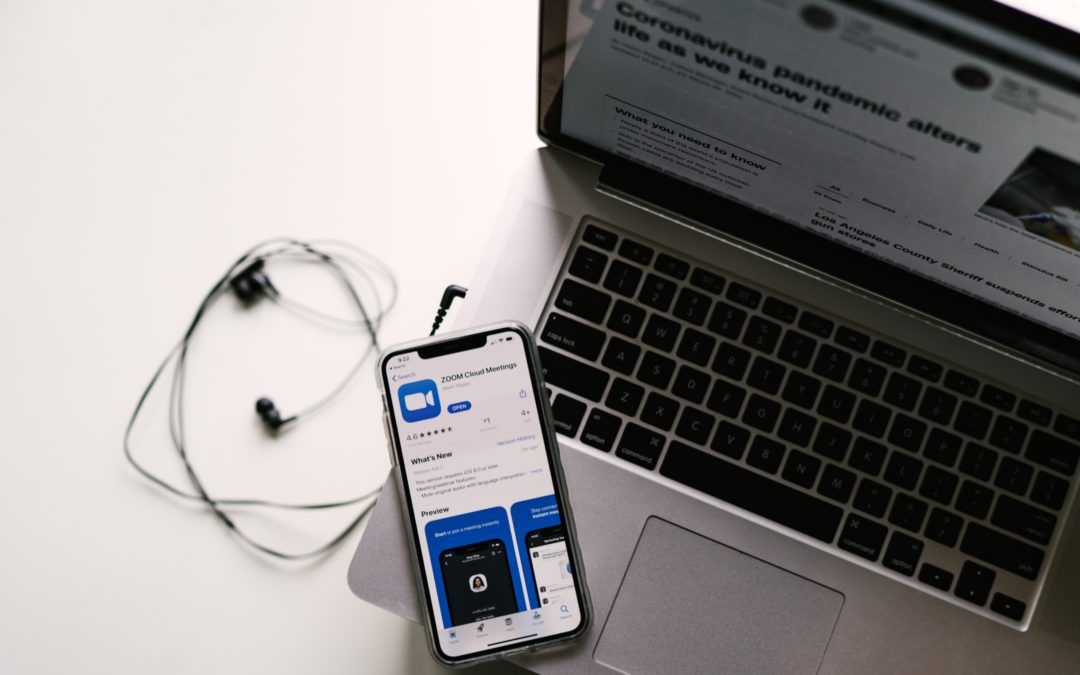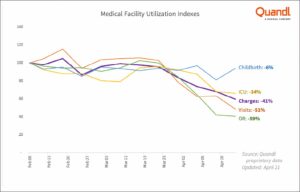
5 Unexpected Uses of Telemedicine and How They May Help You
Specialists like dentists, orthodontists, ophthalmologists, psychologists, and even veterinarians are using telemedicine solutions during the pandemic.
Like their physician counterparts, many resisted virtual visits until it became the only way to continue to care for patients and stay in business, as stay-at-home orders expanded from weeks to months.
Here’s a quick run-down of telemedicine’s use in other specialties and what the road ahead could look like for each.
DENTISTRY
Where we are now
According to the American Dental Association, since early March, 79% of dentistry practices closed except for emergency procedures, and another 18% closed completely.
This isn’t surprising given how COVID-19 is transmitted but, for patients in pain, it can be hard to know what constitutes a true emergency and what can be managed at home. Helping patients figure out what needs immediate attention and what can wait seems to be tele-dentistry’s sweet spot.
“Research indicates that 80% of acute dental concerns can be addressed at home without an in-person visit,” explains Chelsea Acosta Patel, Head of Wally Experience at Wally Health, a dental care start-up based in Boston. “Using technology, dentists can triage issues and care for patients while keeping them out of the chair.”
Where we go from here
The bigger, long-term opportunity, according to Patel, may be in preventative care by creating and monitoring at-home preventive care solutions across the patient dental journey.
“Most dentists don’t have the tools to keep an ongoing pulse with patients. They just assume that if a patient has an issue or a question, they’ll call the office. Teledentistry solutions enable dentists to develop customized, ongoing touchpoints to help patients remain healthy and catch potential issues early. This improves the patient’s experience, drives loyalty and word of mouth (pun intended) for the dentist, creating a virtuous oral health cycle.”
ORTHODONTICS
Where we are now
While Dentists need a way to answer questions, triage issues, and provide follow-up care, Orthodontists have a more pressing need – to make sure their patients’ jaws continue to develop and their teeth continue to move in the right way.
“We serve a vulnerable pediatric population whose jaws are developing. The adjustments we make as part of their treatment affect that growth and development,” explains Dr. Adam Welmerink of Welmerink Orthodontics in Reno Nevada. “When we realized this would be more than a 2-week shutdown, we needed a way to keep our patients safe, make sure their appliances weren’t doing any harm, and ensure their treatment was progressing as planned,”
Through services like Orthodontic Screening Kit (OSK), patients receive instructions on how to take photos and upload them to the OSK site for review by their orthodontists. Of course, the orthodontist’s ability to assess the patient’s need is determined by the quality of the photos, but, at a minimum, the service creates an opportunity for orthodontists to reconnect with their patients and give them guidance on signs that could trigger an in-office visit.
Where we go from here
Telemedicine in orthodontics, like many other specialties, will likely continue to be used to triage issues or to serve patients in remote rural areas.
“Many of our patients live in rural areas, with some driving 2 hours for a 10-minute appointment. We’ll probably continue to use (OSK) to see if they need to come in. And I could see using it in a limited capacity to triage patients who call with an emergency to assess if they can treat the issue at home or if they need to come in.” Dr. Welmerink mused. “Honestly, time-wise, it’s quicker to see a patient in the office. But this is great for right now.”
OPTHALMOLOGY & OPTOMETRTRY
Where we are now
Telemedicine’s use as a way to calm patients and triage concerns, deciding whether or not an in-office visit is required, continues with eye care.
“It is certainly a way to reassure patients that we are there for them, which is most important in these scary times,” NYC optometrist Dr. Susan Resnick told All About Vision.
While reassurance is important, most eye care professionals agree that telemedicine’s use is extremely limited. Proper eye care requires pupil dilation and specialized tools to accurately identify problems like glaucoma or assess the health of optic nerves and retinas.
Where we go from here
Despite its limitations, Dr. Resnick sees value in continuing to use telemedicine, “We will continue to utilize this platform whenever necessary. We do not view it as a disruptor or threat, but rather as a way to bolster our practice.”
Not everyone agrees.
“I’m not terribly enthusiastic (about remote eye exams),” Illinois ophthalmologist Dr. Benjamin Ticho told All About Vision. “There’s going to be too many mistakes. Plus, it diminishes the warmth and personality of the interaction. For many patients, a good doctor visit is a pleasant social occasion, and for many doctors, that’s part of why we went into medicine.”
MENTAL HEALTH
Where we are now
The data is staggering.
Before the crisis, 20% of US adults lived with mental illness but less than half received treatment according to federal statistics.
In the last two weeks of March, 45% of US adults felt that worry and stress related to COVID-19 were harming their mental health. It’s likely that number has increased as stay-at-home orders extend, and job losses and furloughs increase.
Yet the adoption of telemedicine to address mental health concerns has been slow. A phenomenon that is far from new. Case in point – over a decade ago, Congress excluded mental health providers from a $30M investment in digitizing patient health records. Even now, as CMS, private insurers, and state regulators are easing restrictions and increasing reimbursement for telemedicine to treat physical concerns, similar attention and flexibility have not been shown to mental health concerns.
As a result, “(providers) are kind of trying everything right now and seeing what can work,” John Torous, director of the digital psychiatry division at Beth Israel Deaconess Medical Center told Politico.
Where we go from here
More than other specialties, the jury is out on what happens next with regards to telemedicine for mental health.
On one hand, “so much of counseling has to do with body language, being physically present in the room, intonation,” Lynn Linde for the American Counseling Association told Politco. “Sometimes, that’s lost when you don’t have a good internet connection, or one of your starts getting garbled.”
On the other, this could be a “tipping point for the way we practice,” said Peter Yellowlees, a professor of clinical psychiatry at the University of California, Davis and former president of the American Telemedicine Association.
Optum, a division of UnitedHealth, seems to be betting on the latter. Last week it announced that it was in talks to acquire AbleTo, a New York-based virtual therapy provider for $470M, or 10x forward revenue.
VETERINARY CARE
Where we are now
If telemedicine is good enough for humans, it’s good enough for our animal companions.
A relatively new addition to the specialties offering telemedicine solutions, only a handful of companies are currently playing in this field. TeleVet, a “Texas-based, digitally optimized company focused on veterinary care,” is one.
Before the outbreak, TeleVet was in use in 1000 clinics across the US and even closed a $2M seed round in January.
“We can check for infections such as ear infections or drainage from either a still picture or a video, or even a live video conference with the owner,” Dr. Amy Garrou as Houston-area vet explained to Innovation Map. “The platform has been useful because we can do any of those consultations and get the information we need to manage the case without the pet owner having to come into the clinic.”
Where we go from here
Like dentistry, orthodontics, and eye care, telemedicine’s use in the Veterinary space is a boon for providers and patients at a time when it’s not safe to be in a crowded office. But as restrictions lift, like the other health care fields, it’s likely to be used primarily to answer questions, triage concerns, and perform post-surgery check-ups.
THE CLINICAL APPLICATIONS ARE DIFFERENT BUT THE ROAD AHEAD IS THE SAME.
Yes, telemedicine is an incredible tool to have in our collective healthcare toolkit. Its use across medical specialties is evidence that it fills a need for clinicians (provide care for my patients) and patients (address my concerns).
In “normal” times, those needs are well addressed by in-office visits, retail clinics, and urgent care. It is only in very specific circumstances, like when medical professionals cannot easily or safely see patients in-person, that existing solutions fall short and telemedicine becomes the most attractive option.
However, telemedicine only became an available option when regulators relaxed rules, insurers increased reimbursement, and patients accepted emails and video-chats as treatment.
It took a pandemic to create the confluence of circumstances required for physicians, dentists, orthodontists, eye care professionals, mental health caregivers, veterinarians, and other clinicians to begin or expand the use of telemedicine. It’s their experience, and the experiences and decisions of other players in the healthcare ecosystem, that will lead them back to the office and the hands-on care that is both desired and required.

